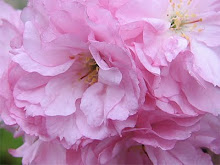
I think that "macrobiotics" means many things to many people. A couple of years ago, I did a Google search for an answer to that question, and I was surprised at how little information out there actually addressed the question specifically. So I've decided to ask this question over and over as I search the Internet, and report my findings here in my food blog as I go. In the meantime, I'll tell you what I think macrobiotics is:
Macrobiotics is a term coined by a man named George Ohsawa when he wanted to find a name for his special cause — a movement to educate the "western world" about an ancient eastern philosophy as well as to bring the philosophy up-to-date in his current world in the far east (Japan). This philosophy he made practical by translating it into how and what we eat, among other things.
Macrobiotics means how to study and practice the art of life in a holistic and natural way, by following the natural laws of nature, described in terms of "Yin," "Yang," and "Constant Change," which he called "The Order of the Universe" or "The Unique Principle."
As George Ohsawa spread "macrobiotics" around the world, he gained a following of disciples, students who then became teachers themselves: In the United States, four of those teachers were Herman and Cornellia Aihara and Michio and Aveline Kushi, who set up macrobiotic learning centers on the east and west coasts. Others followed after them to continue to teach and spread the word.
The reason why George Ohsawa was so passionate about this movement was because he wanted as many people as possible to know about what he had learned — how to save his own life when doctors had told him he would die, just like his mother and siblings had died, of tuberculosis. He cured himself, when others thought he was a hopeless case, solely through diet. Although I don't know precisely what that diet was, I'm guessing that it had to do with eating whole grain brown rice, miso (aged soybeans, grain, and sea salt), and not much else, except maybe a little water to drink.
On one hand, macrobiotics is very simple and on the other hand, it is very complex. It reminds me of the Basic computer language — zeros and ones — that can be used to build complex computer programs, except in this case, the zeros and ones are yins and yangs.
When I look at food and water in terms of yin and yang, I usually visualize it on a large scale or teeter-totter. Extremely yin foods are on one end, extremely yang foods are on other end, and foods with a more equal combination of yin and yang are in the center.
Short grain brown rice (whole rice) is thought to be perfectly in the center of that scale for humans, because for one thing its potassium-to-sodium ratio of 5 to 1 reacts beautifully with our internal workings.
Sugar, processed white granulated sugar from sugarcane or sugar beets, is on the extremely Yin end of the scale.
Salt, meat, and animal products, are on the extremely Yang end of the scale.
It took me awhile to figure out how these foods got to be classified this way, but I figure that meat is probably considered to be so yang because all animals (including humans) are red-blooded and red is yang. Vegetables, on the other hand, are "green blooded" and green is yin. Sugar is really off the charts because it has been stripped of all its characteristics and made into something that I would call synthetic — not a natural food at all!
George Ohsawa's book, Zen Macrobiotics, as well as other books on macrobiotics, provides charts and guidelines for classifying foods in terms of yin and yang. And not just for food — for instance, sunshine is yang, water is yin, air is yin, and the seasons continually change from yin to yang to yin again.
Everything always has some yin and some yang in it. It's the proportions at any given moment that distinguishes something as being either "Yin" or "Yang." Because, you see, everything is always changing. Yin changes to yang and yang changes to yin.
Well, that's enough for now. George Ohsawa and his followers have made classifying foods into yin and yang very easy to get a person started on a basic macrobiotic diet for health/healing and so many people have given, and are giving, us their own personal stories of how macrobiotics has helped them to heal in one way or another.
For me, macrobiotics is a language for helping me to understand my life and personal health, and to gain control for how I want to live.
I want to personally thank George Ohsawa and all of his followers for introducing me to macrobiotics. Thank you from the bottom of my heart!






















































